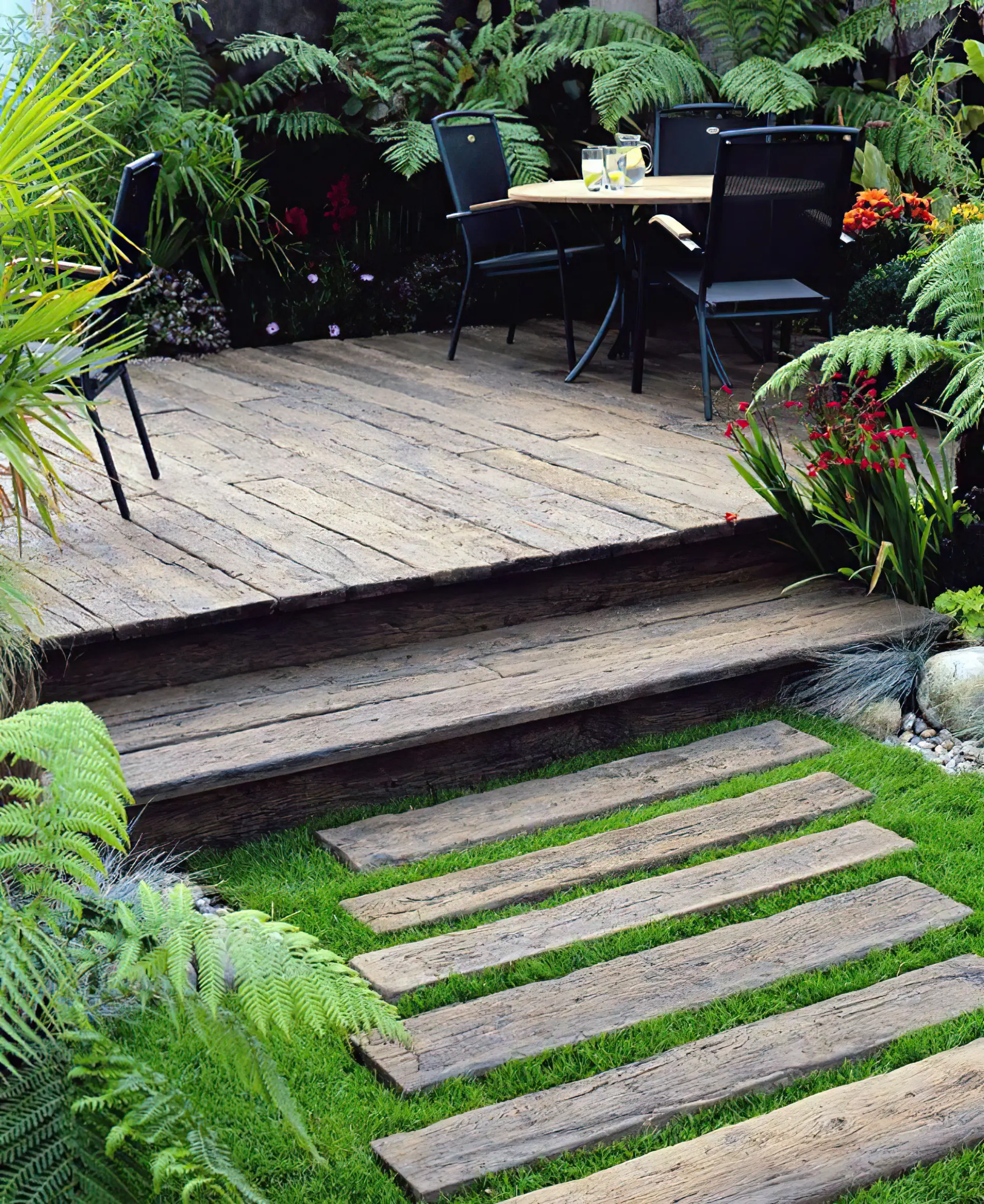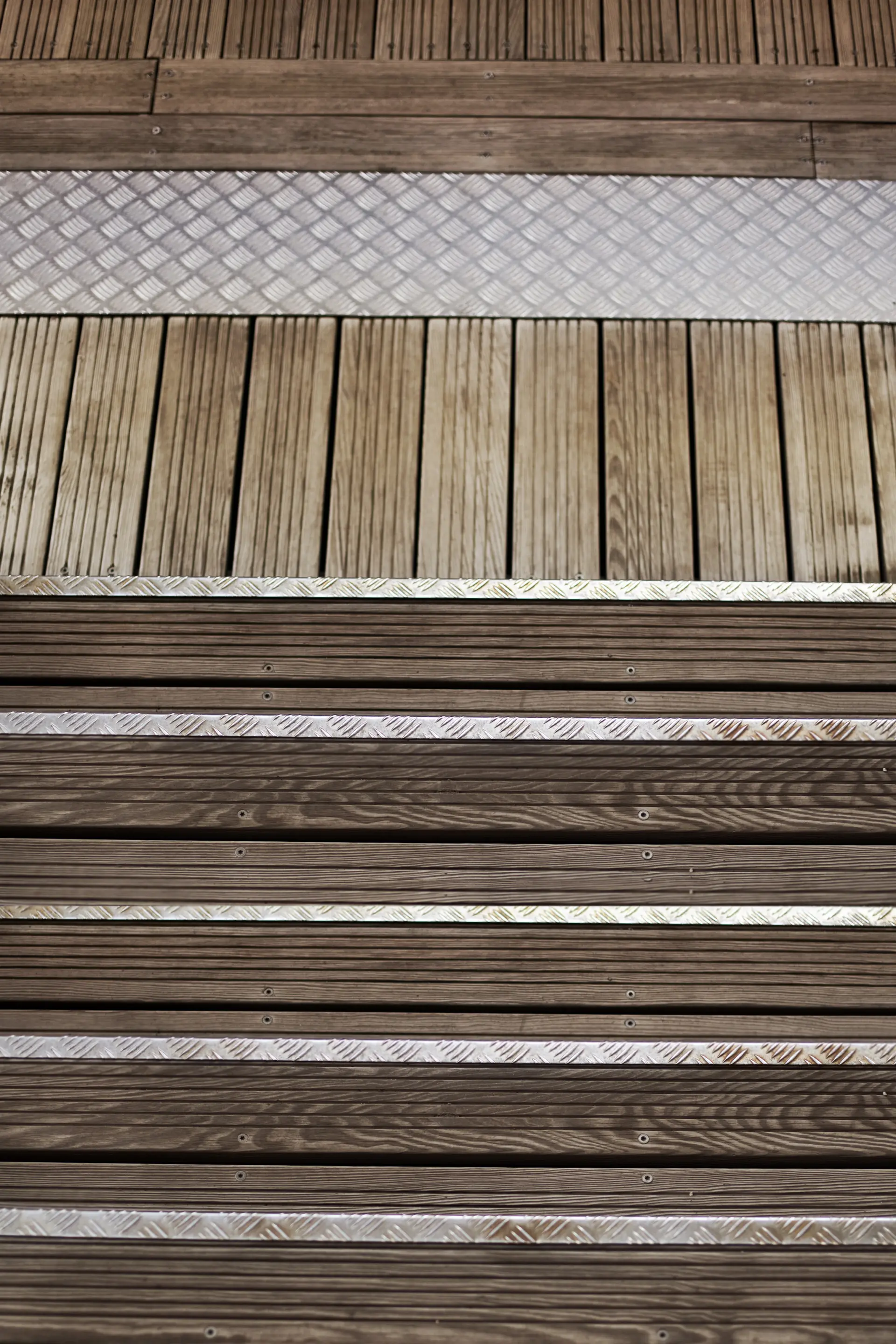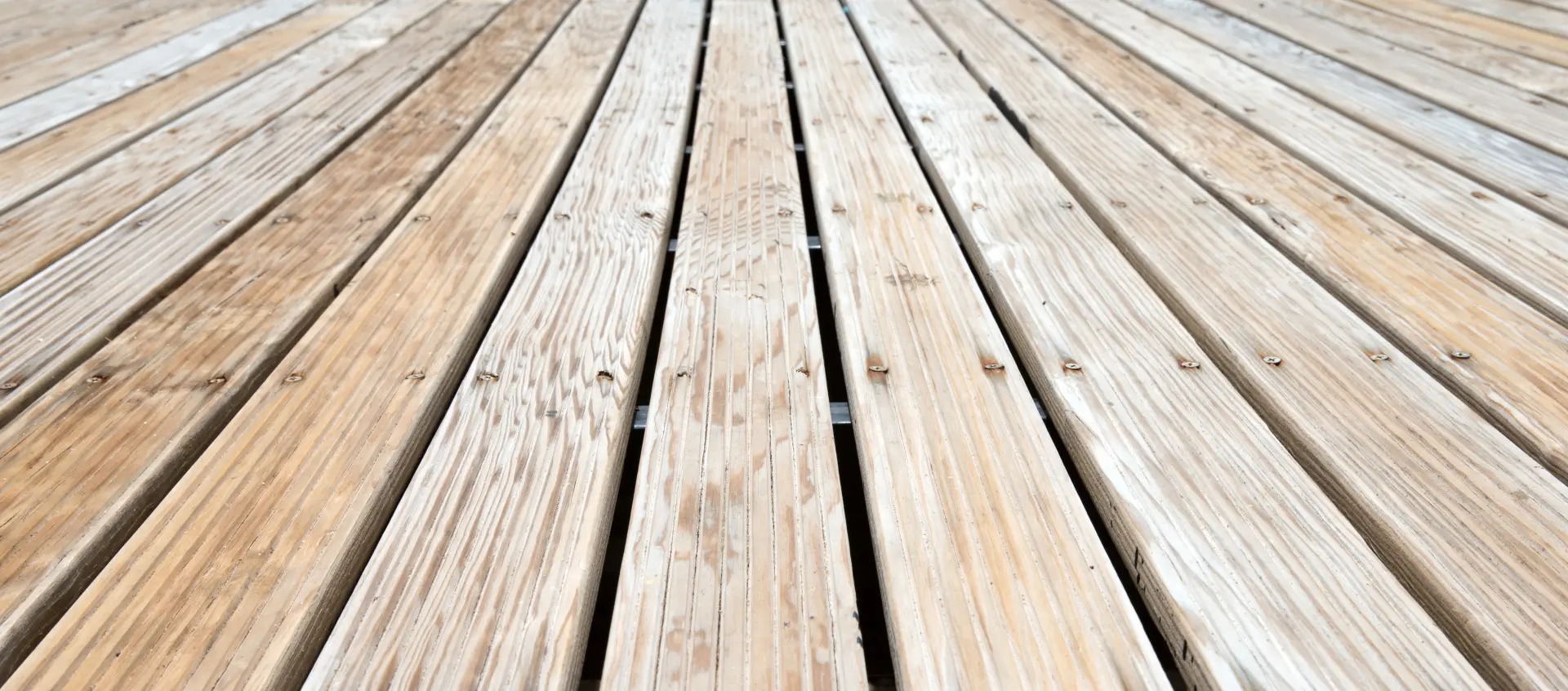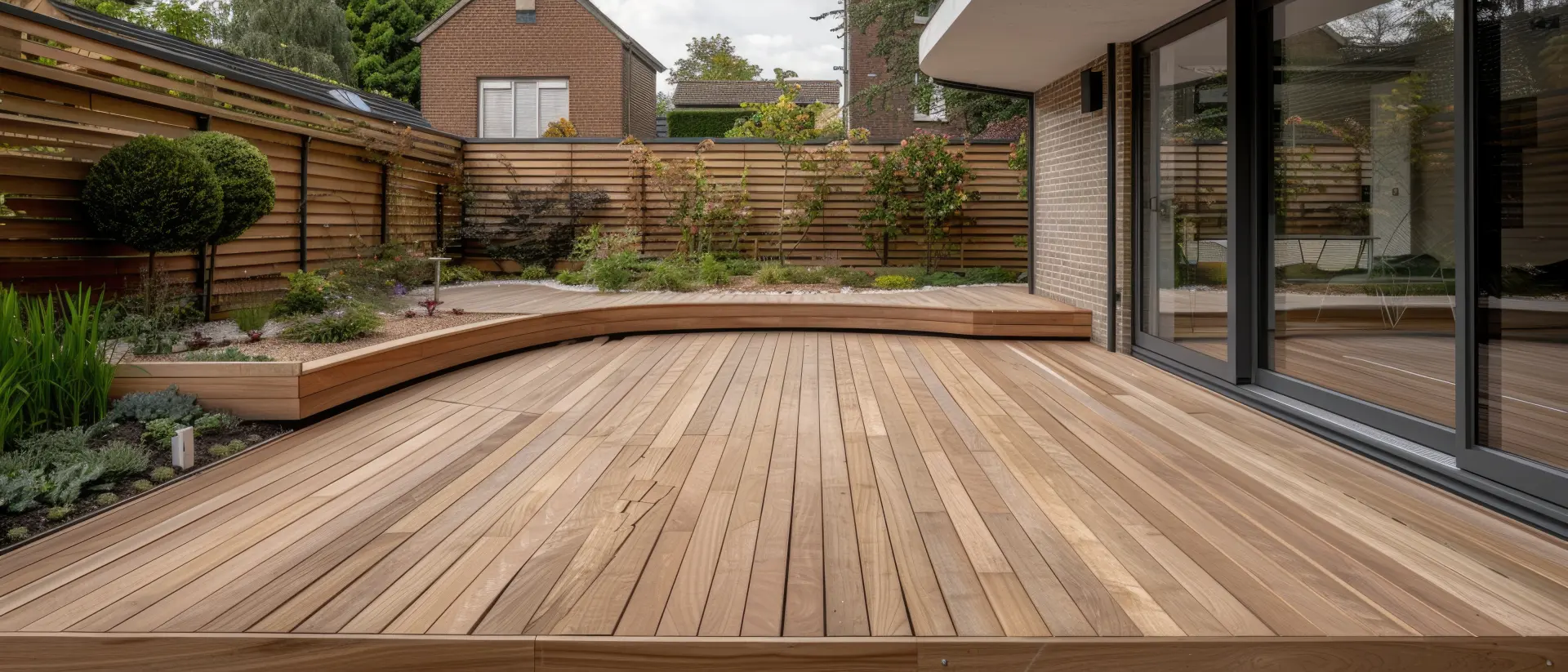Why your wood choice matters
Timber decking looks simple on the surface, but the wood you pick affects everything from cost and looks to safety and upkeep. Different species have different strength, natural oils and resistance to decay. Some stay straight and stable, while others twist or warp if they are not cared for. Your choice also decides how often you will need to clean, stain or seal the boards.
The right wood can feel good under bare feet, grip well in wet weather and last for many years. The wrong choice can rot early, become slippery or look tired long before its time. Thinking about this at the design stage helps you avoid costly mistakes and keeps your garden space safer for everyday use.
Popular softwoods for decking
Softwood decking is common in British gardens because it is affordable, easy to cut and simple to fit. The most popular choice is pressure treated pine, often called Scandinavian redwood. It is widely stocked, takes stain well and, with proper care, can give good service life for many years. Because it is treated, the inner fibres are protected from rot and insect attack, which is important on damp ground.
Spruce and fir are also used, but they are a little softer so can mark more easily under furniture, plant pots or very high foot traffic. Larch is a denser softwood with a warmer colour and better natural resistance to decay, so it suits exposed or coastal sites. Cedar is another softwood that many people choose for its light weight, pleasant smell and rich colour that can weather to a gentle silver grey.

All softwood boards, even the more durable ones, need regular cleaning and surface protection to stop moisture damage, green growth and splitting over time. If you are happy to stain or oil the deck every year or two, softwood can be a smart, budget friendly choice, especially for large areas.
Just remember to buy boards from a trusted supplier, check they are rated for decking use and follow the fitting advice so they have room to dry, breathe and drain properly after rain and snow. This care will help the timber keep its colour for longer, reduce surface splinters and cut down on the risk of slippery patches developing in shaded corners.
How each wood copes with British weather
British weather is a real test for decking. Long wet spells, frost and summer heat all cause timber to swell, shrink and move. Softer treated pine, spruce and fir cope well if the boards are spaced correctly and kept sealed, but they can wear faster in full sun and heavy rain. Larch and cedar handle moisture better and dry out more quickly, which helps limit rot.
Hardwoods such as oak, iroko and balau are denser, so they move less and stand up well to scraping chairs and muddy boots. Whatever wood you choose, good airflow under the deck, regular cleaning and a suitable finish are vital if you want the boards to last through many British winters. Yearly checks for loose fixings and worn patches also keep the structure safer.
Popular hardwoods for decking
Hardwood decking suits people who want a longer lasting, more premium feel underfoot. Popular choices include European oak, which has a classic look and good natural durability when cared for properly. It is quite heavy, so it feels solid and stable once fixed. Many gardens also use tropical hardwoods such as balau, iroko and ipe. These species are very dense, which makes them hard wearing and resistant to dents, scratches and decay.
Balau boards often have a warm golden brown tone that deepens with oil. Iroko has a slightly richer colour and a grain pattern that many people like for modern spaces. Ipe is one of the hardest decking timbers available and copes well with very high traffic, such as large family decks and seating areas.

Because hardwood is so dense, it can be slower to take surface treatments and a little harder to drill and screw. Sharp tools and good quality fixings are important during fitting. Over time, most hardwoods will fade to a silver grey if they are left untreated, which some homeowners prefer. If you want to keep the original rich colour, regular oiling with a product made for hardwood decking is needed.
When choosing a hardwood, it is also wise to look for timber from well managed forests, backed by clear certification. This helps protect woodland around the world and gives you confidence about where your boards have come from. With the right care, a hardwood deck can be a long term feature in your garden.
Natural look and grain
The natural look of the wood is one of the main reasons people choose real timber over composite boards. Softwoods such as pine, spruce and larch often show a clear grain pattern with knots that give a relaxed, rustic feel. Cedar is smoother and more uniform, with gentle colour changes across each board. Hardwoods like oak, iroko and ipe usually have tighter grain and richer tones, which suit more modern designs.
Over time, sunlight will soften the colour of almost all woods, turning them towards silver if they are left bare. Stains and oils can highlight the grain or change the shade, but the natural pattern of the timber always shows through and gives each deck its own character.
Our decking service helps you choose the right timber for your garden, from budget softwoods to premium hardwoods. We advise on how each option copes with British weather, explain care and maintenance, and can arrange supply and expert installation, so your new deck looks great, feels safe and lasts for many years.



